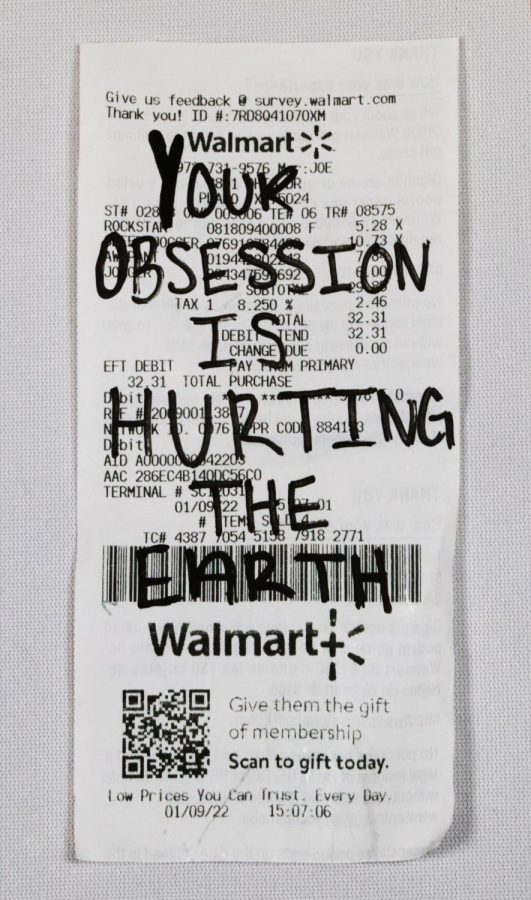Crumbling Coutour
The fashion industry has had detrimental effects on our environment
April 19, 2022
Ads for the most popular fashion items can be seen on every phone and computer screen, television commercials and even billboards. Each ad claims to have the newest most stylish products that are absolute “must haves.” But, we take little time to account for what makes these products so cheap or what makes the one day delivery oh so easy.
Mass consumerism is the idea that the best way to keep the market growing is to constantly produce more products. According to Edolody, this idea has been an often used production strategy for decades, originally starting in the early 1990’s and gaining popularity through the early 2000’s. Nowadays with increased social media advertising, what seemed to be an easy way to make products cheaper has become one of the biggest killers of Earth’s environment.
Landfills and Pollution
One issue with mass consumerism is the waste that is being generated from the factories producing these products. Within Texas alone, over 40% of factories for common brands such as Colgate, L’oreal and even Nintendo, release fineable amounts of trash into rivers and lakes. This excess waste contributes a great portion to the pollution and unclean water destroying the environment.
According to EDGE Fashion Intelligence, out of the 32 billion articles of clothing produced each year, around 62% of them end up in landfills.
The science department at Princeton University has said that fast fashion continues to have a massive impact on landfills, as all the clothes and extra materials consumers throw away that can’t be used elsewhere usually ends up incinerated in a machine which releases toxic gasses into the atmosphere.
In addition, mass consumerism has caused a detrimental effect on many of the countries where cotton is grown. In these locations, there is very little water due to a majority being dedicated to grow and cultivate the cotton plants.
As for the rest of the water around the fields and factories, a majority is contaminated by pesticide runoff resulting in negative effects on the ecosystems that rely on streams or rivers.
This not only destroys habitats for thousands of species but also affects people who rely on this water for drinking, as this water may cause illness associated with the digestive tract, the nervous system, and could even cause cancer.
Factories
Along with these issues, a concern many have considered is the poor working conditions within factories that follow a mass production style.
Labour Behind the Label has stated that oftentimes, employees work from anywhere between 10 – 18 hours on an average workday. Along with the strenuous hours, some factories may fine or fire workers that have fallen behind, leaving no room for breaks or time for rest.
Many of the factories in these countries are not up to the health and safety standards that we have in the US. This leads to factories that might not have emergency exits, may lock people in to avoid theft and in some cases the factories aren’t meant to hold heavy machinery, leading to poorly constructed factories to collapse under the right conditions.
A current popular trend is thrifting, which luckily avoids purchasing from fast fashion brands, but there’s still the issue of disposing of clothes correctly.
Donating clothes to charities or thrift stores is always a good option, but if the clothes are not able to be donated, then you can recycle them. H&M will accept any clothing that cannot be donated to be recycled, and some companies will accept their own clothing to be recycled.
Most of the companies recycling procedures and guidelines can easily be seen on their website, so if someone is unsure, point them in that direction. Ensuring old clothing isn’t making its way to the landfill is going to be one of the best ways to keep the environment happy and healthy.



